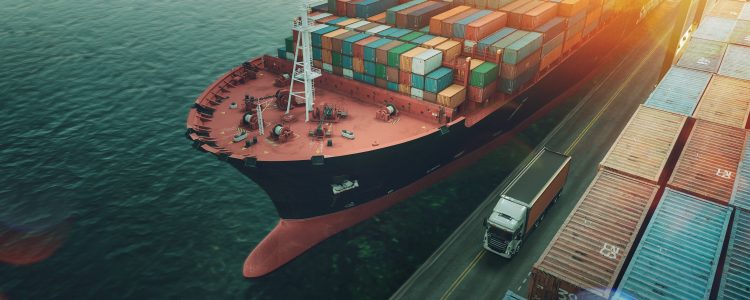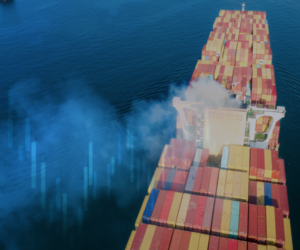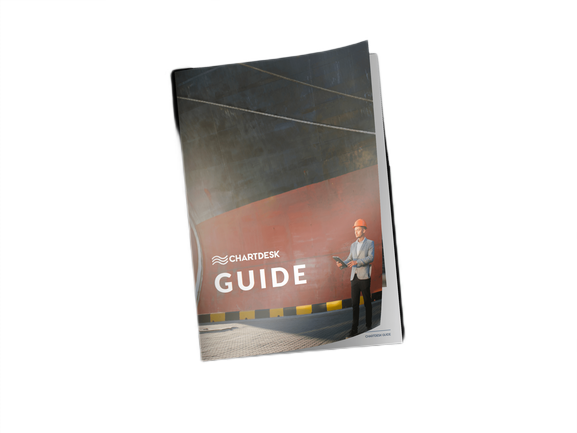
Maritime transport is one of the key ways in which goods are transported around the world today. The history of maritime transport dates back hundreds of years and is still used to this day to move people and goods around the world. While the use of this form of transport has shifted over the years and more challenges have appeared recently, our world wouldn’t be able to operate as it does without this transportation method.
What is Maritime Transport?
Maritime transport is a term that’s used to describe the transportation of goods or people via the sea. It’s used to ship goods between countries and generally refers to international transportation. Maritime transport is used for a wide variety of goods and is the main way that raw materials, such as coal and oil, are shipped around the world. Back in the 1960s, the first maritime containers were used, which increased the reliance on maritime transport. This allowed ships to stack boxes on top of each other, increasing the number of shipments on each voyage. These boxes protect goods from breakages and can be used to transport almost anything. With these containers offering a whole host of advantages to users, they helped to transform the industry into what it is today. Maritime transport has slowed a little over recent years due to the larger capacity of some of the ships today. It’s become more challenging for ship owners to fill a vessel to capacity and to access various ports.
What Types of Maritime Transport Are There?
When discussing maritime transport, there are two main options on offer. Firstly, demand responsive transport, which is sometimes referred to as tramping, occurs when a request activates a search for ships. The other option is liner transportation. An exporter will choose a liner with a specific itinerary in this case, and they share the vessel with many other exporters looking to use the same route.
Maritime transport is used by hundreds of companies, as it has a much larger capacity than other transportation options on offer. On one ship, a company can transport a huge quantity of their goods as needed. Also, with the open sea conditions, maritime transport offers a permanent transportation solution that has fewer disruptions than other options. However, many companies are looking for other alternatives today in our instant culture. Maritime transport is far slower than other options, generally moving at 30 to 50 km/h on most journeys. Therefore, if products have a short shelf life or need quicker delivery, they are much better off being transported in the air or on the road.
How Maritime Transport is Used Around the World Today
Maritime transport connects regions of the world that are connected by the sea. Some of the longest journeys involve routes visiting the Middle East, Africa, Europe, the Far East, and America. For each journey to commence and finish successfully, a whole team of individuals is involved. Ship owners provide the vessels, but they may use a ship management service to look after the day-to-day operation. Shipping agents, ship chandlers, maritime brokers, and transport commissioners all play an important role in the process.
When it comes to selecting a vessel for transportation, there are also various options based on the goods you are moving around the world. Types of ship include versatile cargo, which can hold various goods, container carriers, and barge carriers. On top of that, there are carriers for specific purposes, including bulk, fuel, or chemical carriers.
The ten largest container ports in the world are all located in Asia, the majority of which are found in China. Other key ports include Los Angeles, Rotterdam, Hedland, and Colon. Ships travel through many major oceans globally, and popular routes include the Panama Canal, the English Channel, and the Suez Canal. On any given day, ships are traveling the world, delivering goods door to door for companies.
How Does Maritime Transportation Work?
There are many parts of the process which come together to create a smooth, efficient maritime transportation network. While it may seem like a long-winded or complex process, it is very well organized, having run for so many years at this point. The process begins by picking up cargo from the product’s manufacturer, which is then taken to a warehouse. From here, the shipment is packed up and then loaded onto the container, ready to go. Before making their way onto the vessel, the goods must clear customs, and then they are free to be transported onto the ship.
After the journey overseas, the ship will arrive at its destination, where customs clearance is once again required. It’s incredibly important that the documentation is completed correctly at this stage. This is the point at which the most delays occur, with goods being stopped or delayed by customs. Once the package is cleared, it is then taken to the warehouse and unloaded from the container. The goods have now reached their final destination, where the receiver will distribute them as required. It’s a reasonably simple process, and as long as there are no delays en route and the documentation is completed correctly, it usually offers a smooth option for transporting goods around the world.
To ensure no delays occur, anyone using maritime transport will want to ensure they have the required paperwork for customs clearance. A commercial invoice, bill of lading, packing list, and insurance certificate are critical to the process. If you are shipping hazardous goods, you’ll also need to provide additional certificates or a safety data sheet. Communication is key throughout the process to ensure that goods arrive on time at their final destination.
Advantages of Maritime Transport
Maritime transport has many advantages, which is why it is still used instead of air or rail transportation options by many companies today. It’s a cheaper option than both of these modes of transport, especially when shipping larger goods. You are able to transport massive containers of products, which can also include hazardous goods that would not be allowed on a plane or train. With so many concerns about the carbon footprint of air travel, it’s also a more environmentally-friendly option. As companies are more concerned today about the impact of their products on the world around them, this is something that’s attractive to many users of maritime transport.
Once shipping containers arrive at their final destination, they can then be moved on by road or rail with ease. The containers provide excellent protection for delicate goods, and there’s less chance of damage occurring during the process. A container is filled with many smaller shipments, which you can split with other companies to share the cost. There are also various vessel options available, making it a good option for transporting chemicals or hazardous goods. Once your container is sealed, it’s protected from fire, theft, temperature, and atmosphere changes, which is an issue that is often present when goods are transported by the road, rail, or air.
Drawbacks of Maritime Transport
While we believe the advantages of maritime transport make this a fantastic option for shipping most goods, it does come with its drawbacks. One of the most commonly cited complaints about this mode of transportation is the longer shipping times. The average shipping time is between 25 and 40 days, so it’s not a suitable option for perishable goods. With customers worldwide expecting deliveries within days of placing an order, maritime transport is not always the top solution for some companies in this day and age.
All transportation modes are subject to delays, but there are some concerns that are unique to maritime transport. Bad weather can cause delays on the route, and oftentimes, shipping companies shut down during holidays in various countries. Congestion in a port is another common issue, and when rules and regulations change, this causes mayhem in some parts of the world. Finally, customs is a huge area of concern, and that’s why paperwork must always be completed correctly to avoid this issue. On top of these concerns, remember you’ll always need additional transport to and from the port, so it’s not a completely environmentally-friendly option.
When using maritime transport, ChartDesk can assist you with a next-generation shared inbox solution. Shipping companies and owners can benefit from this service, which uses a modern cloud-based solution. ChartDesk supports your team’s day-to-day work with a selection of management tools and helps companies adjust to the shift away from manual processes and towards a reliance on technology. With the digitization of the maritime transport industry, ChartDesk will help your company to thrive during this time. Regardless of your role in the process, you’ll find this tool helps manage your workload, and it also uses other popular chartering tools.
Our world would not function without maritime transport. Even with the adoption of rail and air transportation options by many companies, maritime transport is the only solution for shipping large or hazardous goods for many businesses. It offers a cost-effective and efficient service and helps goods travel around the world without the environmental impact of other transportation methods.





Leave a reply